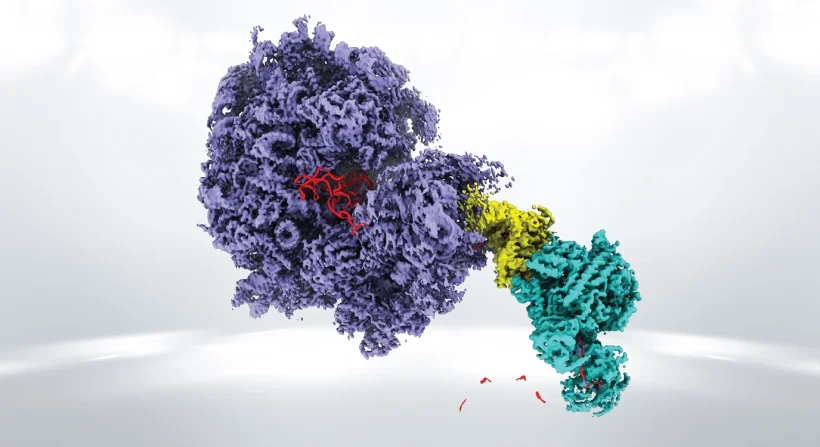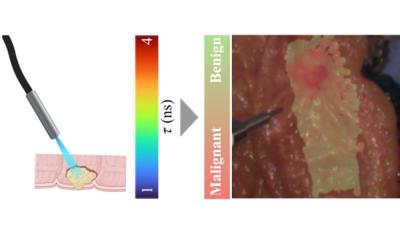
© Illustration: Achim Keidel, MPI für Biochemie
News • Research into protein structures
New research findings on the interaction of the three large protein complexes
Messenger RNA, or mRNA for short, serves as a blueprint for proteins. When mRNA is no longer needed, it has to be degraded. Director Elena Conti and her team at the Max Planck Institute of Biochemistry in Martinsried near Munich have now been able to show that the various molecular machines that translate and degrade mRNA are physically linked to each other and jointly form a supercomplex. This supercomplex consists of the ribosome, the SKI complex and the exosome and is part of the cellular quality control machinery. The results of the study provide new insights into the mechanistic interaction of the individual complexes and were published in the journal Nature.
How do the three large protein complexes – the ribosome, the SKI complex and the exosome – interact? In their current study, a team of scientists led by Elena Conti addressed this question.
The functions of the individual complexes have been well understood for many years. Ribosomes, often referred to as the cell’s protein factories, translate messenger RNA (mRNA) into a specific sequence of amino acids, in a process referred to as translation. During this process, the ribosomes link together amino acids into chains resulting in the production of a new protein.
This study provides visual evidence that all the components fit together directly like individual machine parts.
With the help of the SKI complex, mRNA is transported to the exosome if it is either no longer needed or is defective. The exosome functions like a molecular shredder and the SKI complex acts as a hand that transports the mRNA to the shredder.
The life of a mRNA ultimately results in its removal by degradation, i.e., breaking it down. For pathways involving the exosome, the aim of the study was to determine whether the individual protein complexes work in isolation or if mRNA degradation can be coupled to translation. Prior work from the Conti group had already shown that the SKI complex and the exosome work closely together by forming a stable complex. Armed with this knowledge and high-resolution microscopy techniques, Alexander Kögel, Achim Keidel and colleagues have now discovered in humans that all three protein complexes assemble into a supercomplex.
The scientists additionally turned their attention to the formation of the supercomplex in a situation, where the mRNA is defective. Normally, multiple ribosomes bind to a single mRNA strand simultaneously. However, in certain situations, when the mRNA is damaged, two ribosomes can collide while translating the mRNA. Conti’s team recreated this situation using mRNA that causes collisions. With this set-up, they were able to demonstrate that these collisions recruit the SKI complex, which can then target the mRNA for degradation by the exosome.
The high-resolution structural data has now shown the scientists how the individual protein complexes are in close contact with each other. Comparable to a quality control unit in an industrial production line, the SKI complex attaches itself to the ribosome in certain scenarios where an error in the mRNA is detected. The helicase in the SKI complex unwinds the mRNA into a linear strand. Once bound to the ribosome, the SKI complex can extract the mRNA and transfer it to the exosome where it can be degraded. This process requires another protein, SKI7, which bridges the interaction between the SKI complex and the exosome.
Thanks to the enormous developments in recent years in the field of cryo-electron microscopy and the new AI-based software AlphaFold, which enables predictions about protein structures, scientists can now examine much larger protein machines and understand how they interact. Indeed, this study provides visual evidence that all the components fit together directly like individual machine parts. In doing so, they reveal an important function of the supercomplex: connecting the translation of an mRNA by the ribosome and its destruction through the exosome.
11.10.2024










